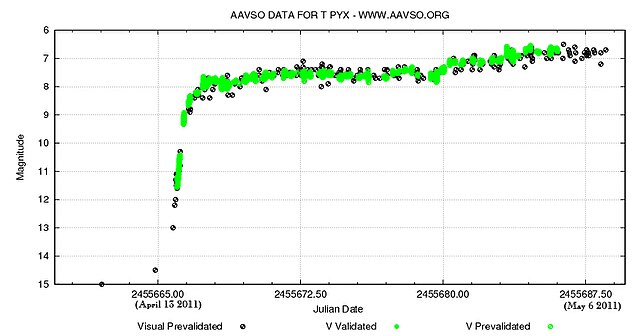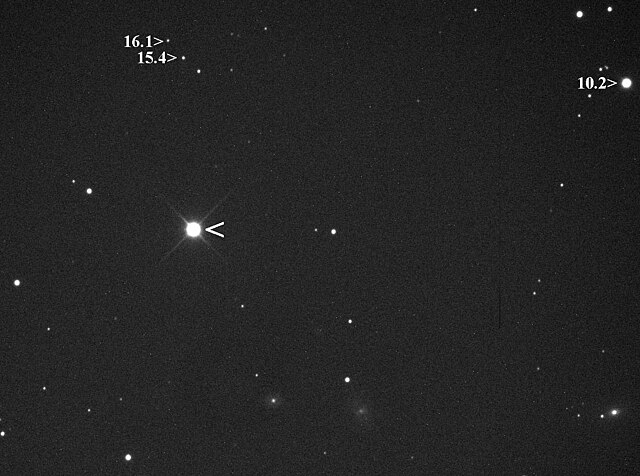T Pyxidis is a recurrent nova
and nova remnant in the constellation Pyxis. It is a binary star system and its distance is estimated at 4,783 parsecs from Earth. It contains a Sun-like star and a white dwarf. Because of their close proximity and the larger mass of the white dwarf, the latter draws matter from the larger, less massive star. The influx of matter on the white dwarf's surface causes periodic thermonuclear explosions to occur.
T Pyx surrounded by the nova remnants of a previous outburst. Hubble Space Telescope composite
AAVSO light curve of recurrent nova T Pyx from April 13 to May 6, 2011. Up is brighter and down is fainter.
A nova is a transient astronomical event that causes the sudden appearance of a bright, apparently "new" star that slowly fades over weeks or months. All observed novae involve white dwarfs in close binary systems, but causes of the dramatic appearance of a nova vary, depending on the circumstances of the two progenitor stars. The main sub-classes of novae are classical novae, recurrent novae (RNe), and dwarf novae. They are all considered to be cataclysmic variable stars.
Artist's conception of a white dwarf, right, accreting hydrogen from the Roche lobe of its larger companion star
Nova Eridani 2009 (apparent magnitude ~8.4)
GK Persei: Nova of 1901
Nova in Andromeda Galaxy






